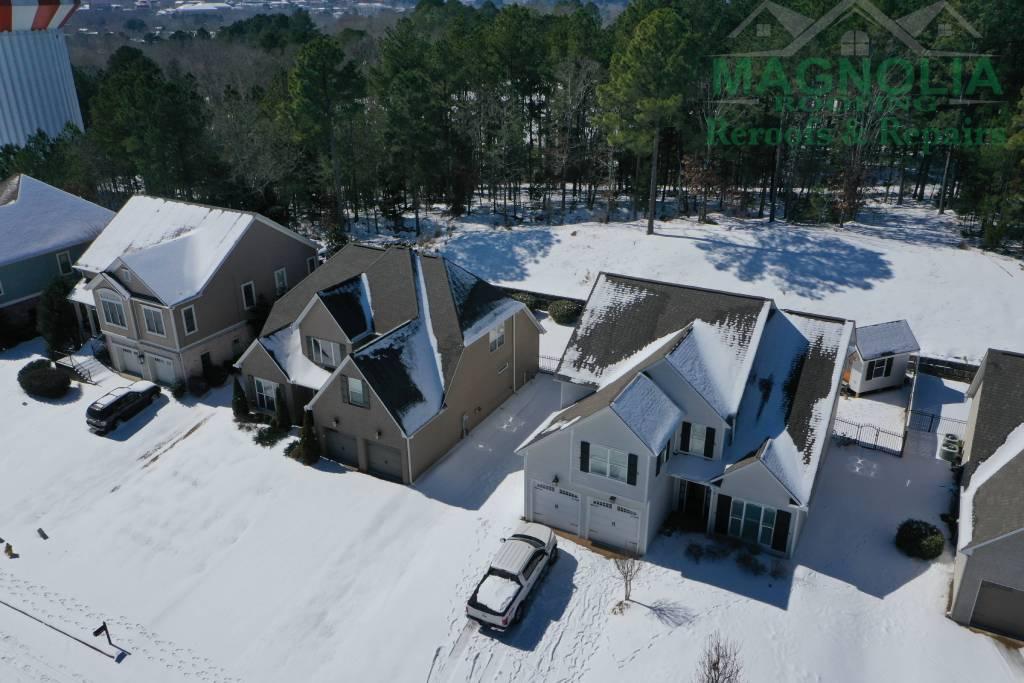The layers of your home’s roofing system are likely not stacked up like a sandwich. They may be close to or beside one another. Indeed, any residential roof must comprise six layers, which are vital to the health and safety of your home’s structure.
Let’s see what these residential roofing layers are.
Six Residential Roofing Layers, and Why You Need Them
- Roof Deck
You may think of a roof deck as the bottom layer of your roof. It comprises rafters and sheathing. The sheathing is visible on the roof rafters.
For it to do its function, you must protect it from the elements, keeping it sturdy and securely attached to your house. Depending on the severity of weathering, mildew, and decay, your residential roofer may likely repair many sheathing panels during a re-roofing.
- Underlayment
Do you want to learn more about the structure of your home’s roof? For your security, avoid going to explore up there. Slips and falls on roofs can cause serious injuries.
So, you must trust us when we tell you that underlayment comes after the sheathing but before the rest of your roof. The underlayment is a synthetic or natural felt that is laid out and stapled in place.
Because of its flexibility and elasticity, underlayment can stretch a little before returning to its original form. It seals around staples and nails to prevent water from entering your home via the ceiling.
- Water and Ice Shield
A water and ice shield is a thick, self-adhesive material that occupies the lowest three feet of your roof. It is also installed over the sheathing.
Ice dams can form on the last three feet of your roof. So, it is necessary to give this layer additional protection, and this is the job of the water and ice shield.
This rollable, thick material adheres to the subfloor, adding another 1/8 inch or so of waterproofing. Besides, like underlayment, it quickly seals itself around penetrations like staples and nails.
- Flashing
High-quality and well-installed water and ice protection is fantastic. Besides, it is not a panacea for all roofing issues. Usually, flashing is a thin metal sheet used to seal up seams where two different materials meet. Likewise, roofers commonly install flashing around chimneys and valleys.
Your roofer will apply a flexible rubbery material called flashing to prevent water from entering via roof penetrations. He will install it around pipe stacks, kitchen and bathroom vents, and other similar areas.
The flashing around your roof’s edges is not so much a layer as it is a structural component of your roof’s overall design.
You can use flashing as a base for roofing materials like shingles and metal panels. Also, roofers can shape it to fit in tight spaces, such as around chimneys.
- Ridge Vents
Roof ventilation is essential. For your roof to work well, you must have air flow up through the soffit vents. Airflow is also necessary along the bottom of the sheathing and at the ridgeline.
Ridge vents allow for optimal ventilation on your roof. Ridge vents, along with the roofing material, make up the topmost layer of your roof.
- Roofing Material
Roofing materials such as shingles come in several colors and prices, allowing you to find the best match for your house and budget.
If you need help to choose a style, an experienced, professional roofer will guide you.
Are you choosing a roof color for your house? Exterior designers recommend avoiding fashionable hues or standouts if you want to optimize resale value. But, of course, you are free to choose anything you like!
You can find earth tones, neutrals, and energy-efficient hues in fiberglass-asphalt shingles and metal roofing.
Final Thoughts
These six layers are only the beginning. Your roof also includes many additional components you will need to install correctly. These components work together to provide you with a dependable and resistant roof.
To know your best options, don’t hesitate to contact Magnolia Roofing. Give us a call at 985-200-4463 and schedule a FREE consultation today. We service areas in Mandeville, Folsom, Covington, Slidell, Madisonville, and Abita Springs, LA.
